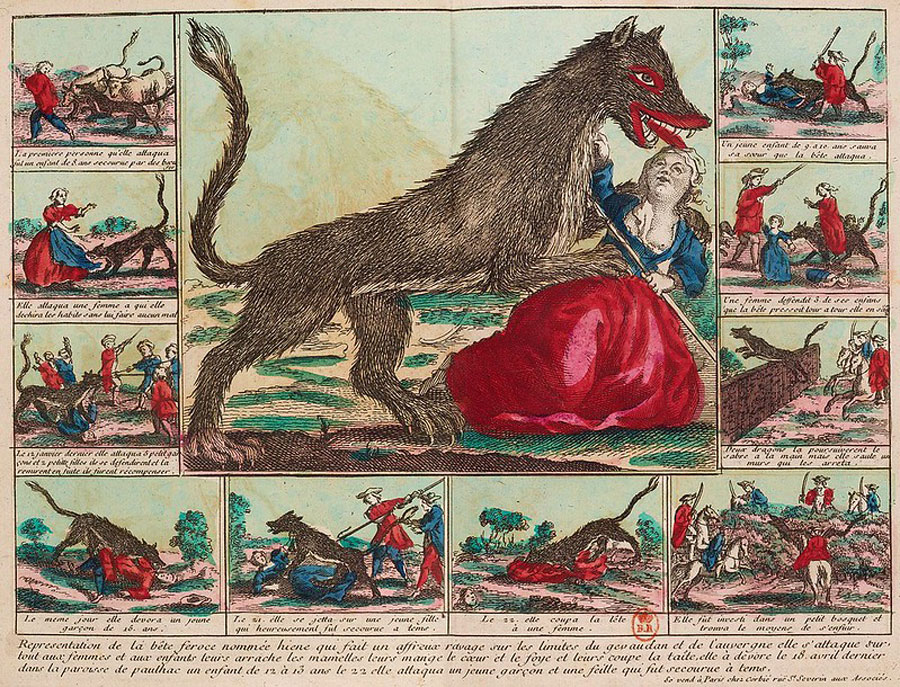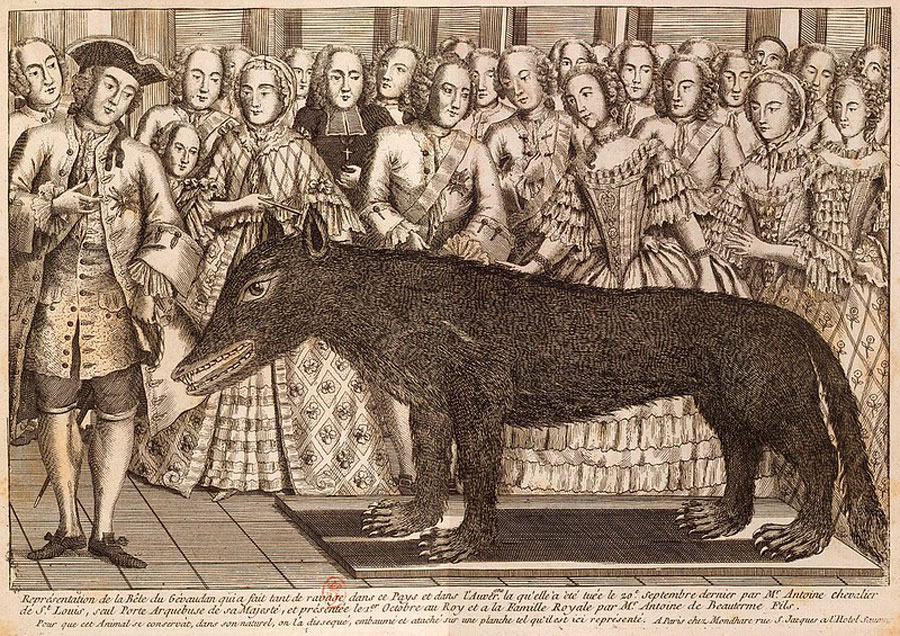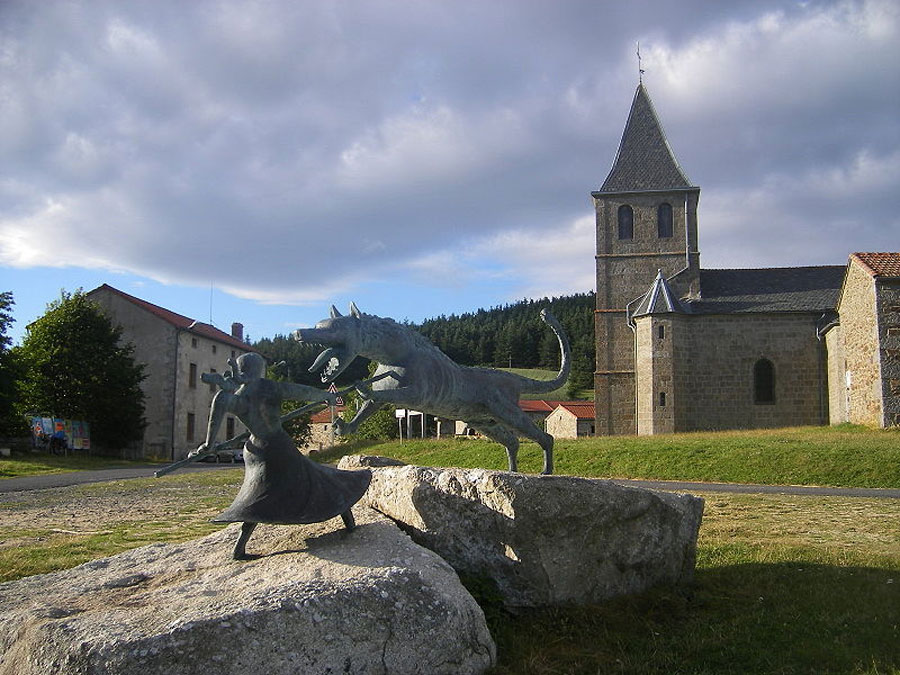In the year 1764, something was killing the shepherd and peasant farmers of the Gevaudan region of France. Whatever it was, it was prolific, killing more than 300 people in the small, wild region.
Plenty of eyewitness testimony survives, describing the killer as some kind of big animal, quickly dubbed “The Beast.” But it was clear that whatever was happening in Gevaudan, these were not normal animal attacks. For example, the Beast preferred to kill mostly women and children, especially small girls.
The Beast also seemed to glory in the violence it caused, and rumors started to spread. It was said that it didn’t just kill, but it also ripped off the heads of victims and drank all of their blood. The reports stated that this creature left nothing behind but a pile of bones.
Illustrators tried to capture the appearance of this beast, but admitted to being terrified by the descriptions. But what is the story behind the Beast? How did it get there, or possibly, who brought it there?
A Monstrous Wolf?
A 1764 depiction of the Beast portrayed it as reddish-brown in color, with dark ridged stripes down the length of its back. The Beast looked similar to a wolf or hyena, but the size of a donkey.
It had six claws, a long gaping jaw, furry tail, and pointed-upright ears. Attacking with a sound similar to a wolf howling and horse neighing, the Beast seemed to prefer ambush, knocking you over from behind.

This first depiction led to a public fascination with what the Beast of Gevaudan could be. Soon, there were many other depictions, all claiming to offer definitive explanations as to what the Beast was. One popular theory was that this creature was a young bull, although its behavior and savagery would seem to discount this.
By the end of 1764, a bounty of 2,700 livres was offered for the person who would kill or capture this creature. This amount was equal to a year’s pay for working men in that era.
International Fame
News of a ruthless beast in France became one of the most popular international stories of the time, seeing an unprecedented amount of attention in foreign newspapers. With the international attention came more fanciful speculation, and a German print of this beast depicted it more like a quadrupedal kangaroo than a hyena or wolf.
But the papers of the different countries, for all their local variations and preferred theories, all emphasized the violence and savagery of the Beast. Most of the publications showcased the Beast’s preference of killing women and children, and all contained blood.
Attempts to Kill the Beast
As the winter of 1764 drew in, the Gevaudan attacks had become a national problem. And it soon became so serious that King Louis XV intervened, proposing a reward for the person who killed the Beast.
With this proposal in mind, tens of thousands of professional hunters travelled to Gevaudan, hoping to claim the prize. For better assistance, King Louis also deployed Jean-Baptiste Duhamel, one of his dragoon captains, along with royal troops.
But the hunters, Duhamel, wolf stalkers, and all of the people who went to find the beast failed and returned empty-handed. The attacks continued, but once the victim was dead the beast seemed to vanish into thin air.
Francois Antoine, Louis XV’s Lieutenant of the Hunt, travelled to the region in 1765 and shot a huge wolf, called the “Wolf of Chazes.” Given the size of the animal killed, everyone thought they won this battle against the Beast!

Antoine returned to Paris, where the animal was stuffed and displayed at Versailles. But Antoine was mistaken – this was not the Beast, and the attacks continued.
But by that time, the royal court considered the matter closed and had started to lose interest in this concern. There was no further royal involvement, as the headcount continued to rise.
A local nobleman, the Marquis d’Apcher, had to step in, deciding to organize another hunt with famed hunter Jean Chastel, in 1767. Jean was said to have killed a large number of wolves, severely reducing their population in the area.
Was the Beast of Gevaudan among the wolves he killed? All that can be said for sure is that, after 1767, there were no further attacks.
A Supernatural Monster?
Many of the people of Gevaudan considered the creature to be supernatural. It was like nothing they knew from the land, in its size, appearance, violence, and elusive nature.
Some people believed that this was the work of werewolves or “wolf whisperers.” People came to believe that there was a “commander” of wolves, directing these attacks on the people of Gevaudan.
Other theories abounded. Some thought it might be a lion, hyena, or some other exotic animal taken from Africa and released into the wild. Others thought it was an unknown species, some prehistoric holdover, or even Chastel’s trained animal which he was using to deflect attention from other crimes.
Modern theories are not much more illuminating. The region of Gevaudan was infested with wolves, and it could be that there was not just one Beast around the region, but many. The increase in wolf attacks remains unexplained, but this would explain why the Beast could not be found, and why it could not be killed.
The Final Headcount
Wolf attacks occurred all over France in that period, and are believed to have caused around 9,000 fatalities across the country between the last half of the 16th century to the first half of the 19th century. The attacks in Gevaudan became memorable because of the ruthless violence and higher fatalities.

But it was the press and media that really sensationalized the events, and in the process they may have turned the wolf infestation into a fantasy beast attack.
It is over 250 years now since the Beast of Gevaudan last wandered the fields and forests of that region. But the story and the mystery endures and its legacy is never going to fade. Was it a wolf, or something else? Were these murders, directed by a human or supernatural hand? We may never know.
Top Image: Was the Beast a giant wolf? Source: Rudall30 / Adobe Stock.
By Bipin Dimri